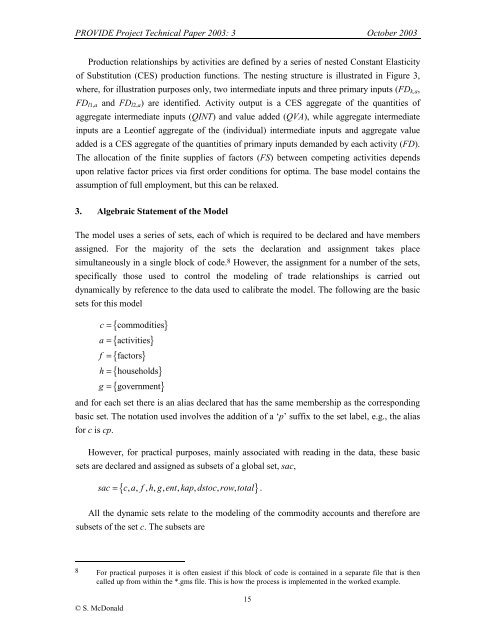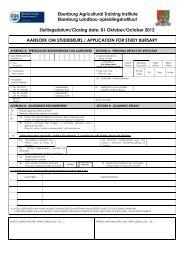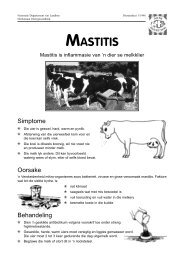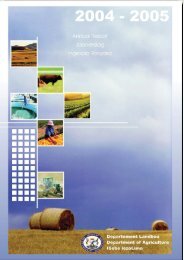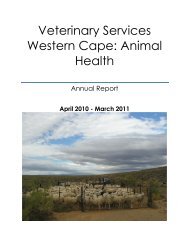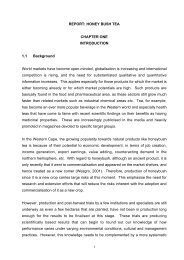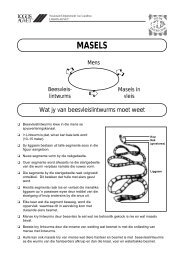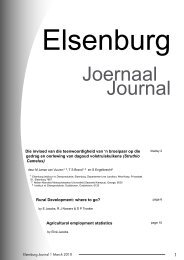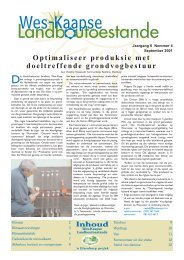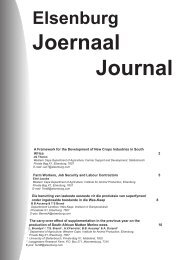The PROVIDE Project Standard Computable General Equilibrium ...
The PROVIDE Project Standard Computable General Equilibrium ...
The PROVIDE Project Standard Computable General Equilibrium ...
You also want an ePaper? Increase the reach of your titles
YUMPU automatically turns print PDFs into web optimized ePapers that Google loves.
<strong>PROVIDE</strong> <strong>Project</strong> Technical Paper 2003: 3 October 2003<br />
Production relationships by activities are defined by a series of nested Constant Elasticity<br />
of Substitution (CES) production functions. <strong>The</strong> nesting structure is illustrated in Figure 3,<br />
where, for illustration purposes only, two intermediate inputs and three primary inputs (FD k,a ,<br />
FD l1,a and FD l2,a ) are identified. Activity output is a CES aggregate of the quantities of<br />
aggregate intermediate inputs (QINT) and value added (QVA), while aggregate intermediate<br />
inputs are a Leontief aggregate of the (individual) intermediate inputs and aggregate value<br />
added is a CES aggregate of the quantities of primary inputs demanded by each activity (FD).<br />
<strong>The</strong> allocation of the finite supplies of factors (FS) between competing activities depends<br />
upon relative factor prices via first order conditions for optima. <strong>The</strong> base model contains the<br />
assumption of full employment, but this can be relaxed.<br />
3. Algebraic Statement of the Model<br />
<strong>The</strong> model uses a series of sets, each of which is required to be declared and have members<br />
assigned. For the majority of the sets the declaration and assignment takes place<br />
simultaneously in a single block of code. 8 However, the assignment for a number of the sets,<br />
specifically those used to control the modeling of trade relationships is carried out<br />
dynamically by reference to the data used to calibrate the model. <strong>The</strong> following are the basic<br />
sets for this model<br />
c =<br />
a =<br />
f =<br />
h =<br />
g =<br />
{ commodities}<br />
{ activities}<br />
{ factors}<br />
{ households}<br />
{ government}<br />
and for each set there is an alias declared that has the same membership as the corresponding<br />
basic set. <strong>The</strong> notation used involves the addition of a ‘p’ suffix to the set label, e.g., the alias<br />
for c is cp.<br />
However, for practical purposes, mainly associated with reading in the data, these basic<br />
sets are declared and assigned as subsets of a global set, sac,<br />
{ c, a, f , h, g, ent, kap, dstoc, row,<br />
total}<br />
sac = .<br />
All the dynamic sets relate to the modeling of the commodity accounts and therefore are<br />
subsets of the set c. <strong>The</strong> subsets are<br />
8 For practical purposes it is often easiest if this block of code is contained in a separate file that is then<br />
called up from within the *.gms file. This is how the process is implemented in the worked example.<br />
© S. McDonald<br />
15


